Reviews
Paul Fejos
USA, 1928
Credits
Review by Cullen Gallagher
Posted on 17 February 2009
Source 35mm print
Categories The Silence After Sound: Hollywood’s Last Silent Movies
By 1928, German Expressionism, along with some of its core personnel, had officially emigrated to America. But even though it was well on its way to becoming a house style for Hollywood - particularly at Universal and Fox studios, where the European personnel were primarily located - it had yet to fully assimilate. At the forefront of the migration was F.W. Murnau, who channeled all of the shadow-play of Nosferatu and The Last Laugh into his first American film, Sunrise. However, America is not so much the subject of the film as it is a metaphysical allegory. “The city” and “the country” are like abstract psychological spaces where his characters’ fears and desires manifest and become reality. Similarly, fellow émigré Paul Leni’s The Man Who Laughs takes place in France, and there is nothing quintessentially American about The Cat and the Canary. And as for those domestic filmmakers inspired by Murnau, Leni, and company? John Ford’s Four Sons is set in Germany and Frank Borzage’s Seventh Heaven and Street Angel are both European-set love stories. King Vidor’s The Crowd comes real close to fully adapting Expressionism to American society… but Paul Fejos’ Lonesome comes even closer.
The irony, of course, is that Paul Fejos (née Pál Fejös) was born in Budapest, Hungary in 1897. Though perhaps it is fitting that it took an immigrant to fully appreciate the pulse and physical contours, to say nothing of the personages, of 1920s New York. Fejos’ life before he came to this country is vague, at best. Photoplay suggests that he made fifty-two movies before coming to Hollywood1, while Richard Roud maintains there were only five such features2. Bruce Frankel has shed much needed light on Fejos’ background. In Hungry, Fejos went to medical school and served as a soldier in World War I before becoming a set designer. Moving to the United States in 1923, he worked first as a bacteriologist for Rockefeller University before moving out to Hollywood where he boxed while pursuing his dream as a filmmaker. An independent feature made for less than $5,000, The Last Moment, garnered him not only critical attention, but also a lucrative contract at Universal.3
Lonesome is a working-class lullaby. In finding its plot in the day-to-day activities of everyday life, Lonesome reminds of a narrative version of Berlin: Symphony of a Great City, and also anticipates the docu-drama prototype People on Sunday that borrows significantly from Fejos’ story. With almost no intertitles, the film’s opening sequence shows the expressive magnificence of editing during the silent era. Its heroes, Mary (Barbara Kent) and Jim (Glenn Tyron), are average blue-collar citizens and their story is that of an ordinary day. They may not know each other, but they are isolated parts of the same machine. They rise early, dress hurriedly, dunk their doughnuts in coffee at the local diner, and rush to join the crowd as the whole city heads to work. Fejos crams the image with so many people it seems as though the screen will burst and subway passengers will spill out into the aisles. Shots upon shots of moving legs and bustling hordes are layered on each other in a dense abyss of chaos and action. Jonathan Rosenbaum insightfully notes that this sequence shows the influence of Russian montage4, but it doesn’t take a familiarity with Sergei Eisenstein to appreciate its frenzied beauty. This is the hustle and bustle of rush hour, and Fejos has captured all its panic and violence in a symphony of light and shadow.
Arriving at their jobs, Jim reports to the factory and Mary to the line of telephone operators. They are cogs in the machine of life, undistinguished and anonymous middlemen that keep the city running smoothly for millions of others. But what break do they get? Leaving work and rejoining the crowd, they return to their respective homes—alone. But when a passing bus advertises transportation to Coney Island, both of them get gussied up and head out for an afternoon of leisure. Spotting the lovely Mary on top of the open-air bus, Jim does his best not to lose her in the confusion of the crowd. Like a Weegee nightmare set in a sand dune, the beaches are just as crowded as the subways, and leisure seems like a futile pipe-dream.
But then the boy and girl meet. Two lonely souls who find in each other the answer to the quiet despair of their monotonous lives. Barbara Kent and Glenn Tyron’s body language and subtle gestures intuitively convey their growing fondness for one another. Coney Island’s carnivalesque attractions provide the vessels (and obstacles) for their courtship. Fejos’ vertiginous camera joins them on the roller coasters, speeding the viewer head first up and down the hilly tracks. The camera partakes in the thrills as a variety of rides sends the couple spinning in circles and threatens to knock them down and blow them away. The fairground’s illusion of danger becomes a metaphor for the pitfalls that await them back in the real world. It’s like a test of their endurance to see what they can weather together. Ultimately, it takes nature to separate the two lovers: a torrential rainstorm sends the crowd into a tailspin that prevents them from reuniting. Returning home to the city alone, the two lovers are faced with the possibility that they may never find one another again.
With only scant intertitles, Fejos manages to convey a tender story that remains faithful to the depth and sincerity of the characters’ emotions. Like Murnau in The Last Laugh, he is able to capture some part of the human spirit that needs no words or dialogue. The few intertitles that are in the picture only reiterate, unnecessarily, what we understand from watching the images. Even more jarring are the few “talking” sequences that studios forced into the film for commercial attraction, and which Fejos did not direct. The primitive dialogue and stationary camera not only debase the artistry and perceptiveness of Fejos’ vision, but add a blemish to what is otherwise a masterpiece of the silent screen.
The addition of “talking” sequences are not the only sign that the silent age was almost over. In one scene, a character listens to a record alone in their room. Next door, someone else listens intently to the song. Sound traverses space to briefly unite them. Even though they are separate, they share in the experience together. Without the aid of a soundtrack, such a bond can only be intimated and not actualized. Lonesome was released twice—first as the silent picture it was intended to be, and later with a synchronized soundtrack with music, sound effects, and the few dialogue scenes. Fejos fully realizes the potential of the silent screen—but I think he also hints (perhaps unintentionally) at the future possibilities to come with the arrival of sound.
- Smith, Sunny. “Paul Fejos.” Photoplay (May 5, 1928). ↩
- Roud, Richard. “Paul Fejos.” Cinema: A Critical Dictionary (Vol. 1). Ed. Richard Roud. New York: Viking Press, 1980. 340. ↩
- Posner, Bruce. “Double Vision: The Films Career of Paul Fejos.” Natural History Magazine (Nov. 1996). 93. ↩
- Rosenbaum, Jonathan. “Paul Fejos.” Cinema: A Critical Dictionary (Vol. 1). Ed. Richard Roud. New York: Viking Press, 1980. 339. ↩
More The Silence After Sound: Hollywood’s Last Silent Movies
-
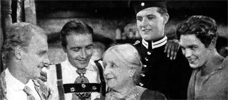
Four Sons
1928 -
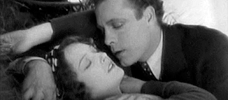
The Crowd
1928 -
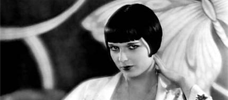
A Girl in Every Port
1928 -
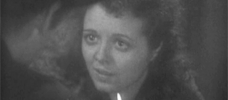
Street Angel
1928 -

The Patsy
1928 -
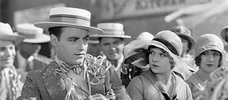
Lonesome
1928 -
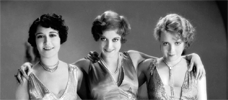
Our Dancing Daughters
1928 -
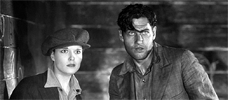
Beggars of Life
1928 -
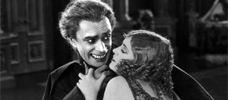
The Man Who Laughs
1928 -

The Docks of New York
1928 -
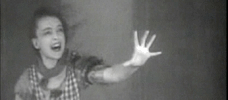
The Wind
1928 -
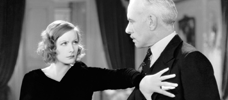
A Woman of Affairs
1928 -
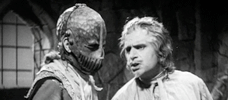
Iron Mask
1929 -
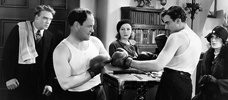
The Single Standard
1929 -

City Girl
1930 -
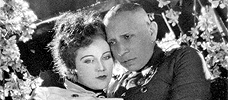
The Wedding March
1928
We don’t do comments anymore, but you may contact us here or find us on Twitter or Facebook.



